“So why are some legal drugs (like nicotine and alcohol) and prescribed medications (like opioids) MORE DANGEROUS for healthy brains than some illegal drugs like LSD and marijuana?”
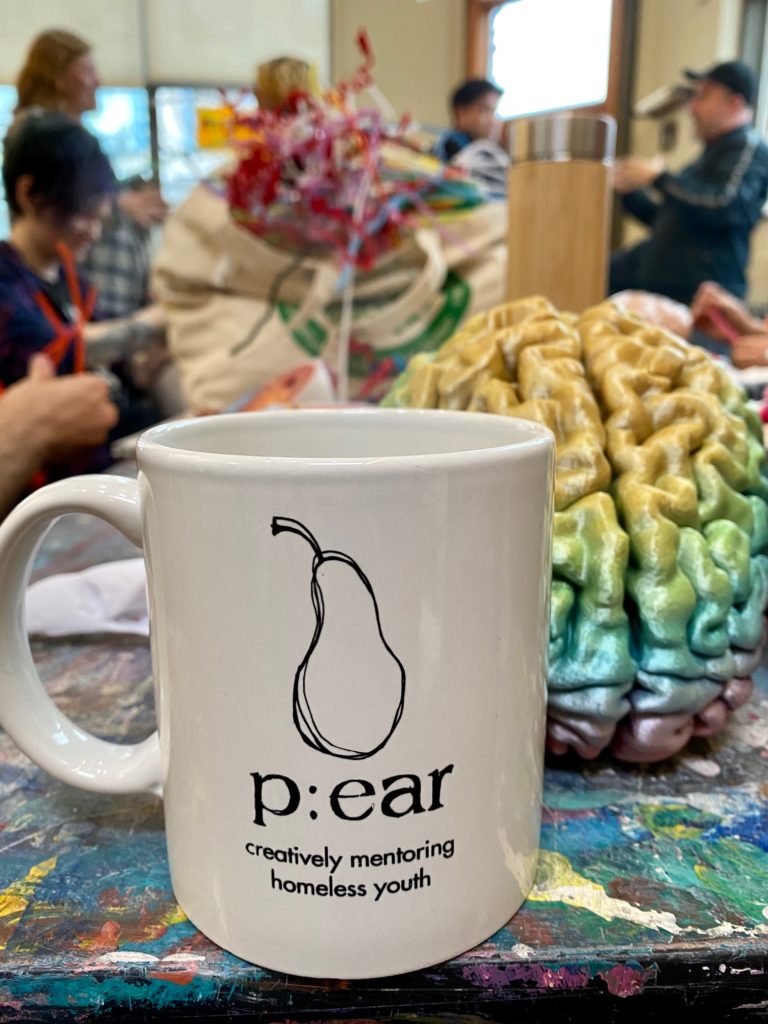
We arrived at p:ear this month to find one young woman who was clearly anxious and jittery, irritated and upset – because (she told us) she could not find a cigarette.
The research is clear: nicotine is among the most addictive chemicals for developing adolescent brains, and the risk of dependence is greater the earlier this exposure begins.
LEARN MORE: Nicotine Addiction
LEARN MORE: Is nicotine addictive?
LEARN MORE: Pharmacology of nicotine: addiction, smoking-induced disease, and therapeutics
LEARN MORE: Early Course of Nicotine Dependence in Adolescent Smokers
LEARN MORE: Evidence of Nicotine Dependence in Adolescents Who Use Juul and Similar Pod Devices
LEARN MORE: Are We Losing the War on Nicotine Addiction?

And executives of the major tobacco companies, including Philip Morris, knew about the powerfully addictive nature of the drug they pushed on young people for decades, specifically targeting advertising at children and adolescents in order to add new long-term consumers of their products.
“Today’s teenager is tomorrow’s potential regular customer, and the overwhelming majority of smokers first begin to smoke while still in their teens… The smoking patterns of teenagers are particularly important to Philip Morris.”
– Philip Morris 1981
LEARN MORE: Tobacco Executive Quotes
LEARN MORE: The Tobacco Industry’s Influences on the Use of Tobacco Among Youth
LEARN MORE: Preventing Tobacco Use Among Youth and Young Adults
LEARN MORE: CDC on Tobacco Industry Marketing
LEARN MORE: How the tobacco industry targets young people
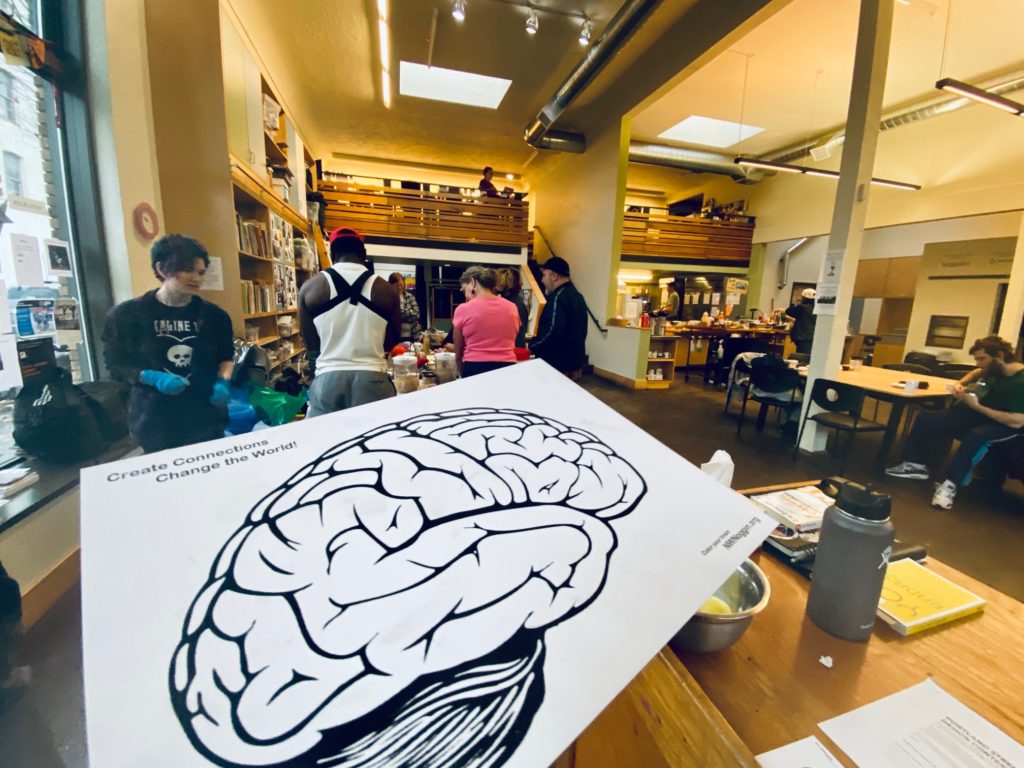
Companies continue to target youth with e-cigarettes, because children and adolescents are more likely to become addicted.
“Given the unregulated context in the US, e-cigarette marketing currently contains many features that may be particularly appealing to youth.”
LEARN MORE: Youth-Targeted E-cigarette Marketing in the US
“Conclusion: JUUL’s advertising imagery in its first 6 months on the market was patently youth oriented.”
LEARN MORE: JUUL Advertising Over its First Three Years on the Market
LEARN MORE: The vape company Juul said it doesn’t target teens. Its early ads tell a different story.
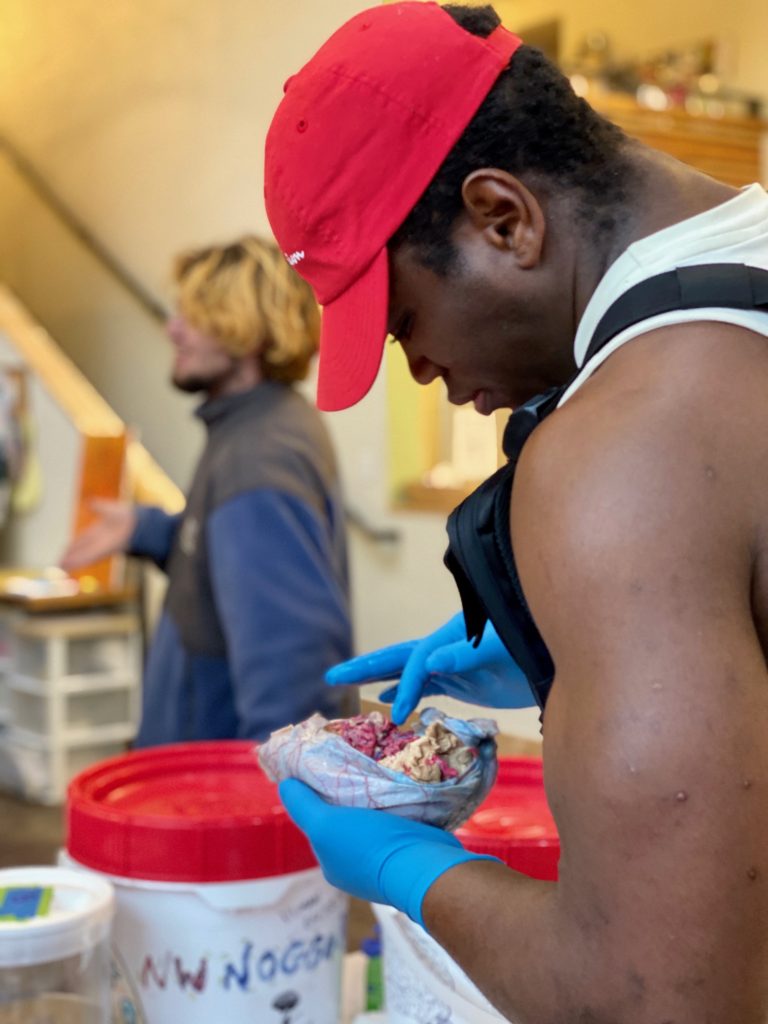
Tobacco, of course, also kills.
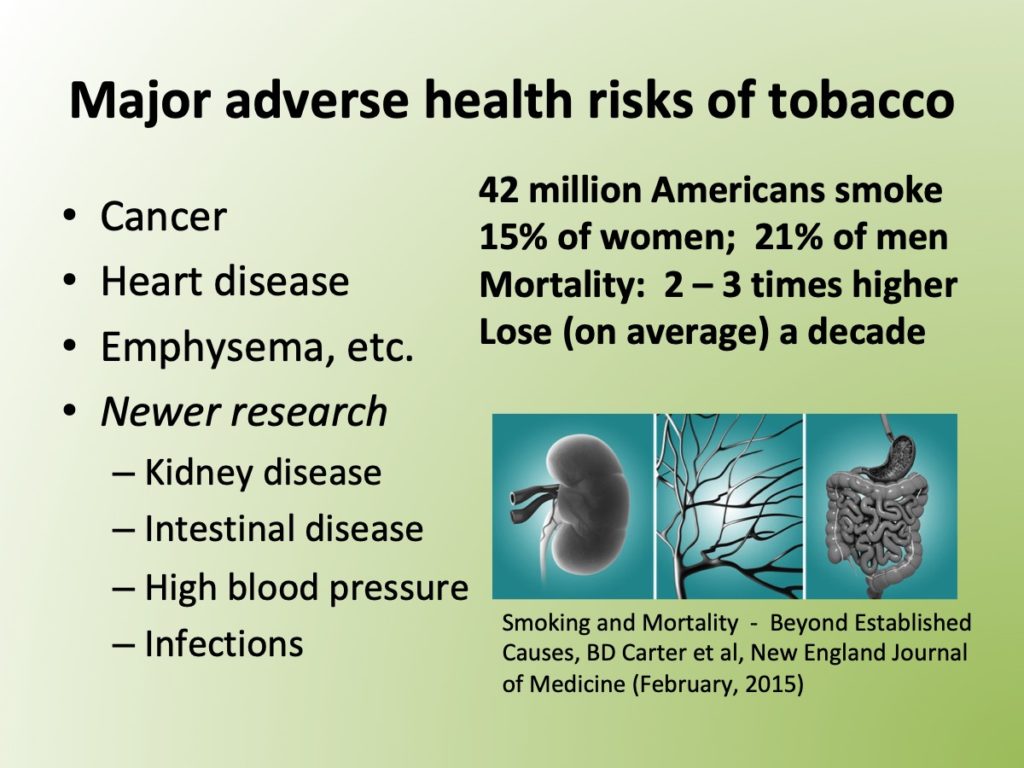
Many health consequences are due to toxic, often cancer-causing chemicals in tobacco smoke, including formaldehyde and tars, which directly damage cells that line the delicate passageways of the lungs.
“Cigarette smoking is responsible for more than 480,000 deaths per year in the United States, including more than 41,000 deaths resulting from secondhand smoke exposure. This is about one in five deaths annually, or 1,300 deaths every day.”
– Centers for Disease Control and Prevention
LEARN MORE: Smoking is the leading cause of preventable death.
LEARN MORE: How Secondhand Smoke Affects the Brain
LEARN MORE: The Effects of Tobacco Use on Health
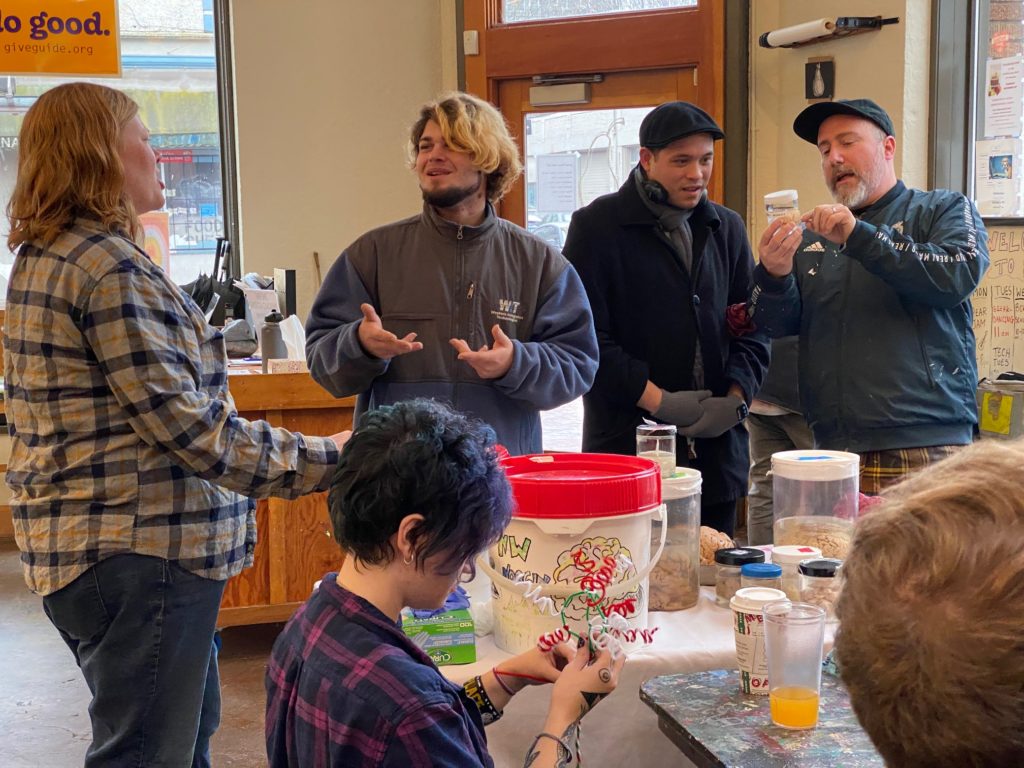
Yet nicotine itself binds to specialized protein receptors in lung cell membranes, setting off biochemical changes which keep these cells living longer. Instead of committing cellular suicide (apoptosis), with nicotine they continue to accumulate damage and are more likely to become cancerous.
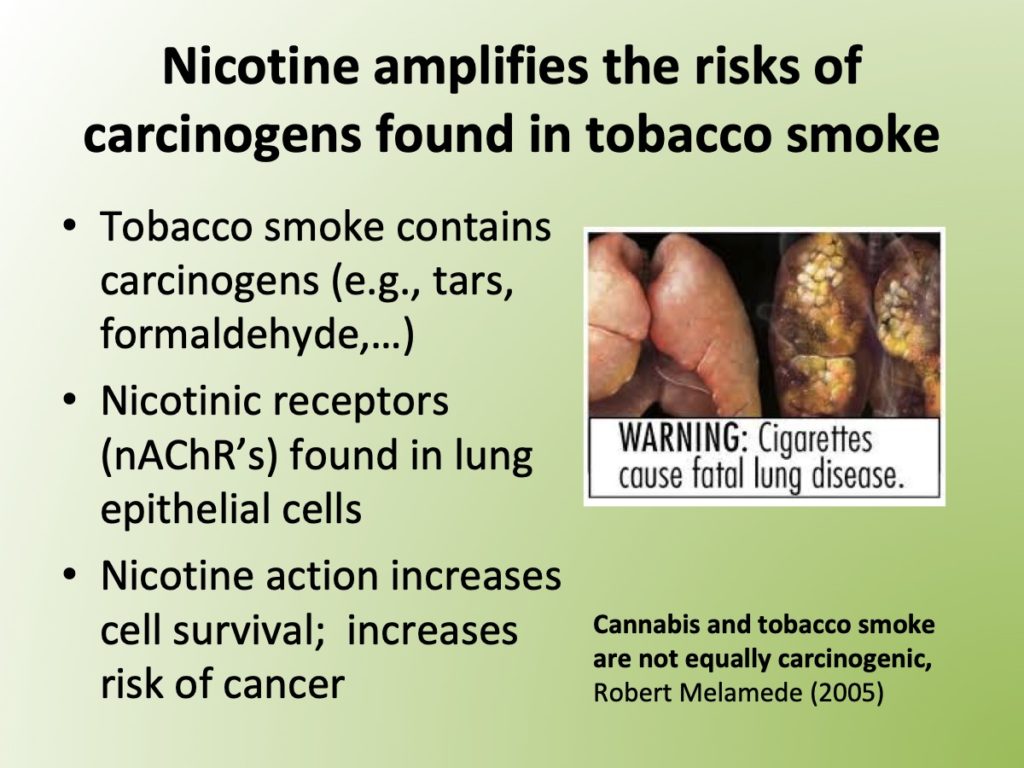
LEARN MORE: Cannabis and tobacco smoke are not equally carcinogenic
And unlike former Vice President Joe Biden’s recent claim that marijuana may be a “gateway drug,” echoing decades of racist demonization by other political leaders and law enforcement…
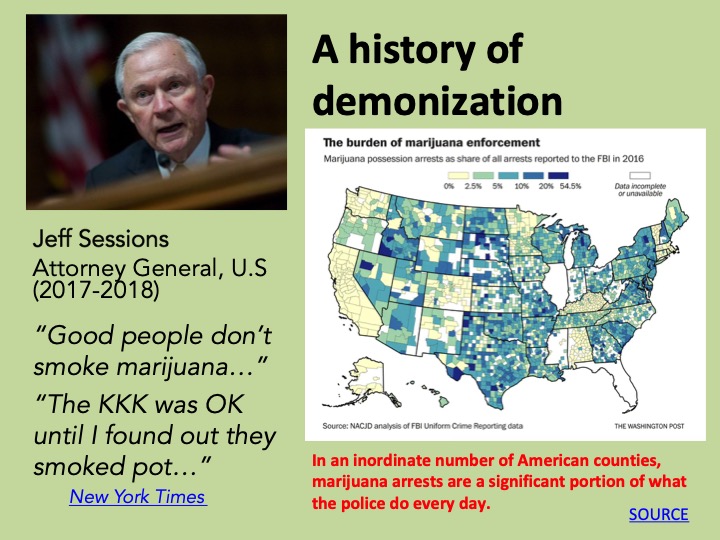
LEARN MORE: Biden says marijuana may be a ‘gateway drug.’ Like most of his generation, he’s not ready to legalize it.
LEARN MORE: Blunt Talk: The Racist Origins of Pot Prohibition
LEARN MORE: Marijuana Prohibition in California: Racial Prejudice and Selective-Arrests
LEARN MORE: Inventing Drugs: A Genealogy of a Regulatory Concept

…there actually IS strong research evidence that nicotine – not marijuana – will prime adolescent brains for later dependence on other drugs of abuse.
“Nicotine acts as a gateway drug on the brain, and this effect is likely to occur whether the exposure is from smoking tobacco, passive tobacco smoke, or e-cigarettes.”
– Eric R. Kandel, M.D., and Denise B. Kandel, Ph.D.
LEARN MORE: Why Nicotine is a Gateway Drug
LEARN MORE: A Molecular Basis for Nicotine as a Gateway Drug
LEARN MORE: Nicotine as a gateway drug: Biological mechanism in mice identified
LEARN MORE: Why are politicians still referring to marijuana as a gateway drug?
LEARN MORE: Ready for Retirement: The Gateway Drug Hypothesis

We recently wrote about new federally funded research which finds fewer clear risks with marijuana than from exposure to legal drugs, including nicotine – and alcohol.

LEARN MORE: Popping off (& pot) @ p:ear
LEARN MORE: No smoke, no fire: What the initial literature suggests regarding vapourized cannabis and respiratory risk
However, the risks from marijuana appear to increase significantly if young people also smoke tobacco and drink.
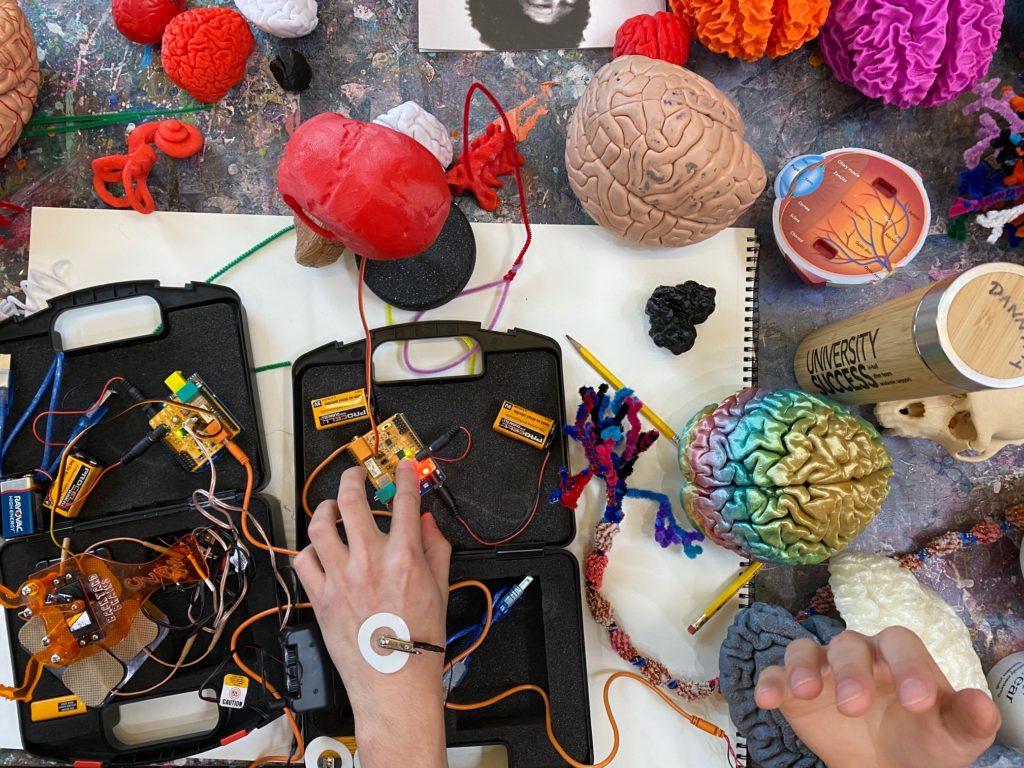
LEARN MORE: Reasons for Marijuana and Tobacco Co-use Among Young Adults
“Individuals who co-used both substances on the same occasion…reported heavier use and greater problematic behaviors than those who did not.”
LEARN MORE: Types of cannabis and tobacco/nicotine co-use and associated outcomes in young adulthood
“Results indicated that more cannabis use was linked with poorer initial acquisition, total learning, and delayed recall on the Hopkins Verbal Learning Test–Revised, but only among cannabis users who sporadically smoked cigarettes in the past year. Conversely, the amount of past year cannabis use was not associated with episodic memory performance among individuals who more consistently smoked cigarettes in the past year.”
LEARN MORE: Tobacco may mask poorer episodic memory among young adult cannabis users
LEARN MORE: Combined Effects of Marijuana and Nicotine on Memory Performance and Hippocampal Volume
LEARN MORE: Cannabis and Alcohol Use, and the Developing Brain
But it’s complicated (for example, see below – might marijuana potentially be neuroprotective in certain circumstances?).
“Some evidence has suggested that negative effects of alcohol on the brain may be buffered in part by potential neuroprotective properties of cannabinoids…Regression models revealed that greater alcohol hangover symptoms predicted worse verbal learning (p < .05) and memory (p < .05) (California Verbal Learning Test, Second Edition) scores for non-marijuana users, but alcohol hangover symptoms were not linked to performance among marijuana users. “
LEARN MORE: Learning and Memory Performances in Adolescent Users of Alcohol and Marijuana: Interactive Effects

We did point out that smoking a “blunt” (marijuana wrapped in tobacco leaves) or a “spliff” (tobacco inside a joint) mixed the cannabinoids found in marijuana with nicotine, the gateway drug, potentially leading to more serious consequences.
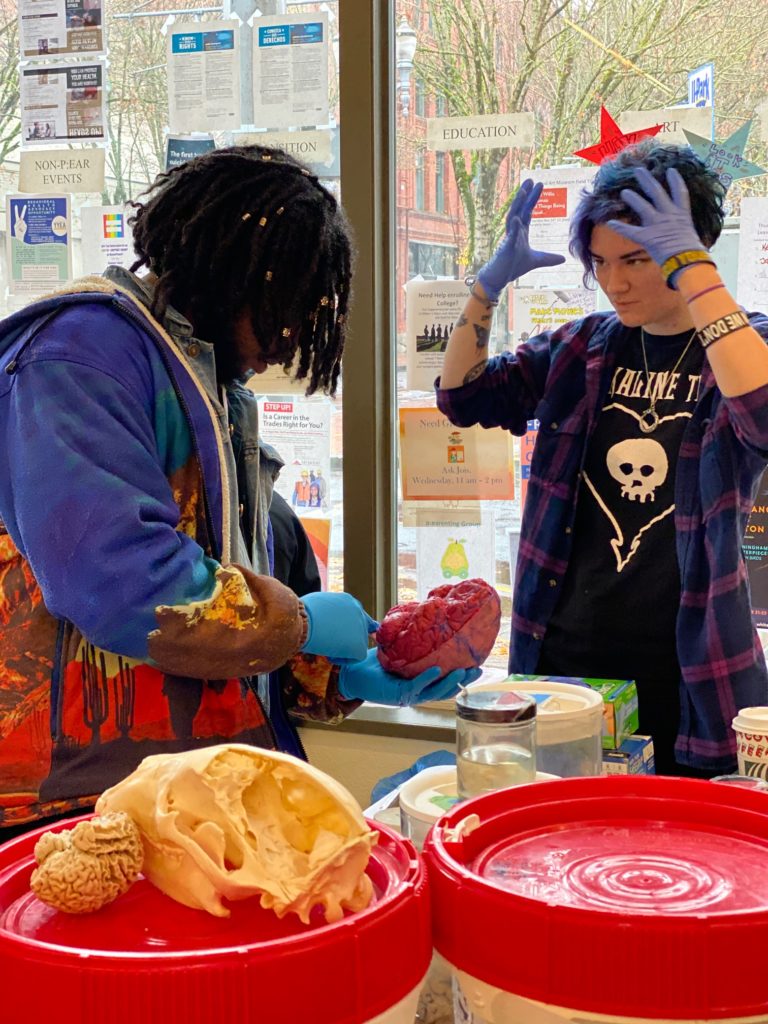
Honest evidence-based discussion about the brain, drugs and behavior, including acknowledgement of the biases inherent in the efforts of multi-national tobacco and pharmaceutical corporations to sell more drugs, is essential for informed – and healthier – communities.

So many thanks to our outstanding outreach volunteers, including Drew Sinclair, Jana Sillay, Johanna Hostick, Danny Gray, Nuno Busch and Cam Howard from Portland State University, Isabella Maranghi from PSU and NIH BUILD EXITO, Aaron Eisen from the National University of Naturopathic Medicine, and Angela Hendrix from NW Noggin.



